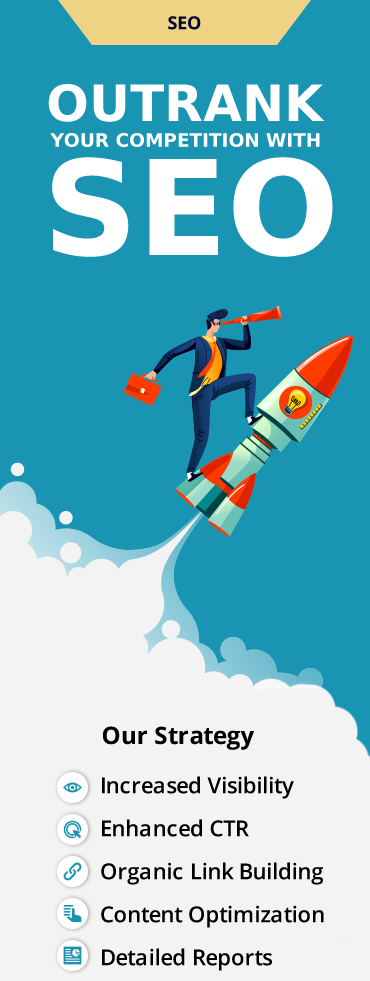Did you know that over 43% of eCommerce traffic comes from organic search? (1)
Yet, many online stores struggle to rank on Google, losing potential customers to competitors.
No matter how great your products are, you’re missing out on significant revenue if your store isn’t visible in search results.
That’s where SEO for eCommerce takes the sweet spot. It isn’t just about driving traffic—it’s about attracting visitors ready to buy.
But ranking well isn’t as simple as stuffing keywords into product descriptions. eCommerce SEO has its own set of challenges, like complex site structures, duplicate content issues, and intense competition.
In this comprehensive eCommerce SEO guide, we’ll cover proven strategies that will help your eCommerce store rank higher, drive qualified traffic, and boost sales.

1. Targeting the Right Keywords to Attract Buyers
Not all keywords drive sales. Some attract visitors who are just browsing, while others bring in high-intent buyers. Here’s how to find and target the most profitable keywords using smart eCommerce SEO tips:
- Focus on long-tail keywords – Instead of optimizing for “running shoes,” target “best cushioned running shoes for flat feet.” Long-tail keywords have lower competition and higher conversion rates.
- Use keyword research tools – Google Keyword Planner, Ahrefs, and Semrush help identify keywords with strong commercial intent. They’re essential for building a strong eCommerce SEO strategy.
- Analyze competitor keywords – Tools like Moz and SpyFu uncover ranking opportunities and gaps in competitors’ strategies.
- Optimize for user intent – Different keywords indicate different buying stages. “Best laptops for designers” (informational) differs from “buy MacBook Pro 16-inch” (transactional). Optimize accordingly to support your overall SEO for eCommerce performance.
2. Optimizing Product and Category Pages for Maximum Visibility
Your product and category pages are where conversions happen. A well-optimized page increases rankings and improves user engagement.
- Write unique product descriptions – Avoid using manufacturer descriptions, as they lead to duplicate content. Instead, create compelling, original descriptions that highlight benefits and support your eCommerce SEO.
- Use structured data markup – Schema markup enables rich snippets, displaying product ratings, prices, and stock availability directly in search results.
- Optimize metadata – Craft compelling title tags and meta descriptions with primary keywords to improve click-through rates. These are core to any successful eCommerce SEO strategy.
- Enhance image optimization – Compress images, use descriptive alt text, and implement next-gen image formats (WebP) for faster loading times.
3. Technical SEO Strategies to Boost Performance
Technical SEO ensures that search engines can crawl, index, and rank your website efficiently. Here’s what to focus on:
- Fix duplicate content issues – eCommerce stores often face duplicate content due to product variations. Implement canonical tags to prevent ranking dilution—a must-follow eCommerce SEO tip.
- Improve site speed – A slow-loading site increases bounce rates. Compress images, enable browser caching, and use a Content Delivery Network (CDN).
- Ensure mobile-friendliness – With over 60% of eCommerce traffic coming from mobile devices, responsive design is essential for SEO for online stores.
- Secure your website with HTTPS – Google prioritizes secure sites in search rankings.
4. Content Marketing for eCommerce Growth
A strong content strategy not only improves SEO but also builds trust and nurtures potential buyers.
- Create product guides and comparisons – Informative content like “Best Gaming Laptops Under $1,500” helps attract customers researching their options and supports your eCommerce SEO services.
- Leverage user-generated content – Reviews, testimonials, and Q&A sections provide fresh, keyword-rich content that boosts rankings.
- Incorporate video content – Product demo videos increase engagement and improve search rankings.
5. Building High-Quality Backlinks to Strengthen Your SEO
Backlinks remain one of Google’s top ranking factors, but getting links to product pages can be challenging. Here’s how to do it effectively:
- Leverage partnerships and guest posts – Collaborate with industry blogs and influencers for link-building opportunities.
- Get featured on high-authority sites – PR outreach can land product mentions on top review sites, enhancing your authority in SEO for eCommerce.
- Use strategic internal linking – Link from blog posts to category and product pages to distribute page authority.
6. Optimizing for Local and Global Search
If your eCommerce business serves specific regions, local SEO is crucial. If you’re expanding internationally, multilingual SEO is key.
- Use location-based keywords – Optimize for terms like “organic skincare products in New York.”
- Optimize your Google Business Profile – Even eCommerce brands benefit from a well-optimized Google Business listing.
- Implement hreflang tags for international SEO – This ensures Google understands your language and regional targeting. It’s one of the underrated eCommerce SEO tips for global brands.
7. Tracking SEO Performance and Making Data-Driven Improvements
SEO is an ongoing process that requires regular tracking and optimization. Use these tools to measure success:
- Google Analytics and Search Console – Monitor organic traffic, user behavior, and search performance.
- Ahrefs and Semrush – Analyze backlinks, keyword rankings, and competitor strategies.
- Screaming Frog – Identify technical SEO issues like broken links and duplicate content.
Future Trends in eCommerce SEO
Staying on top of eCommerce SEO trends is no longer optional—it’s essential. Here’s what’s shaping the future of SEO for eCommerce:
- AI-driven search – Search engines like Google are leaning into AI for a better understanding of user intent. Expect smarter results that prioritize relevance and engagement. Your eCommerce SEO strategy should now focus more on context than just keywords.
- Voice search optimization – With the rise of smart speakers and mobile assistants, optimizing for voice queries is critical. Use natural, conversational phrases and answer-based content.
- Visual search – Users are increasingly searching by uploading images. Optimizing alt-texts, image titles, and implementing image schema, can help your products appear in visual search results.
- Core Web Vitals & UX Signals – Google continues to focus on user experience. Fast loading speeds, mobile responsiveness, and intuitive navigation are now vital SEO for eCommerce factors.
- Sustainability and transparency – Consumers care about how products are sourced. Content that reflects your brand’s values and ethics can help build trust and drive SEO visibility.
Turn Searchers Into Shoppers—Optimize Your eCommerce Store Today!
Conclusion
A well-executed eCommerce SEO strategy transforms your store from being invisible to dominating search results. By targeting high-intent keywords, optimizing product pages, fixing technical issues, and leveraging content marketing, you can attract more buyers and increase sales.
Start implementing these proven eCommerce SEO tips today, track performance, and stay ahead of search trends to maximize your eCommerce success.
FAQs
- How long does it take to see results from eCommerce SEO?
SEO for online stores is a long-term strategy. While minor improvements can be seen within a few weeks, significant ranking and traffic growth typically take 3–6 months, depending on competition and strategy. - What are the biggest SEO challenges for eCommerce websites?
Common challenges include managing duplicate content, optimizing product pages for high-intent keywords, dealing with complex site structures, and acquiring quality backlinks. These are core issues that reliable eCommerce SEO services help address. - Is it necessary to update product descriptions regularly for SEO?
Yes, updating product descriptions with fresh content, new keywords, and customer-focused language can improve rankings and conversions over time. - How can I optimize my eCommerce site for voice search?
Use conversational, long-tail keywords, optimize for questions (e.g., “Where can I buy organic skincare online?”), and ensure your site loads quickly on mobile devices—a vital eCommerce SEO tip. - Can social media impact my eCommerce SEO?
While social media signals don’t directly impact rankings, sharing content on social platforms can drive traffic, increase engagement, and generate backlinks—all of which support a strong eCommerce SEO strategy.
Statistics Reference












